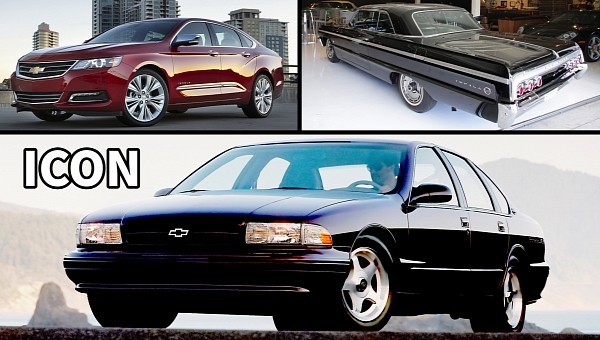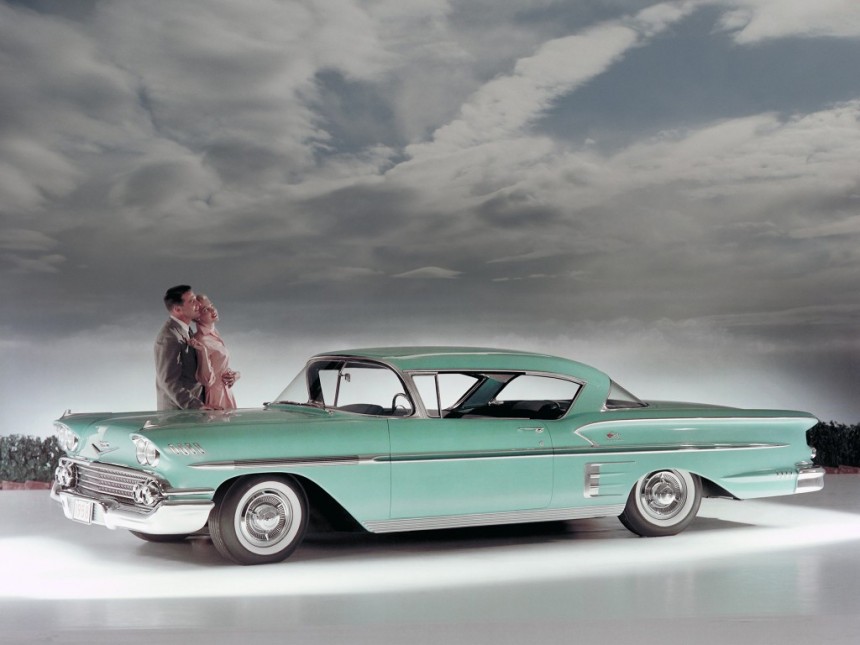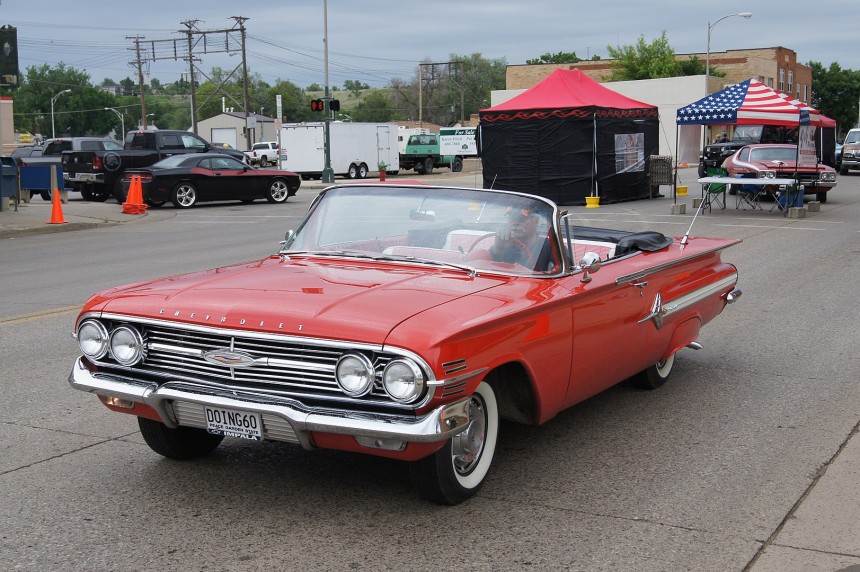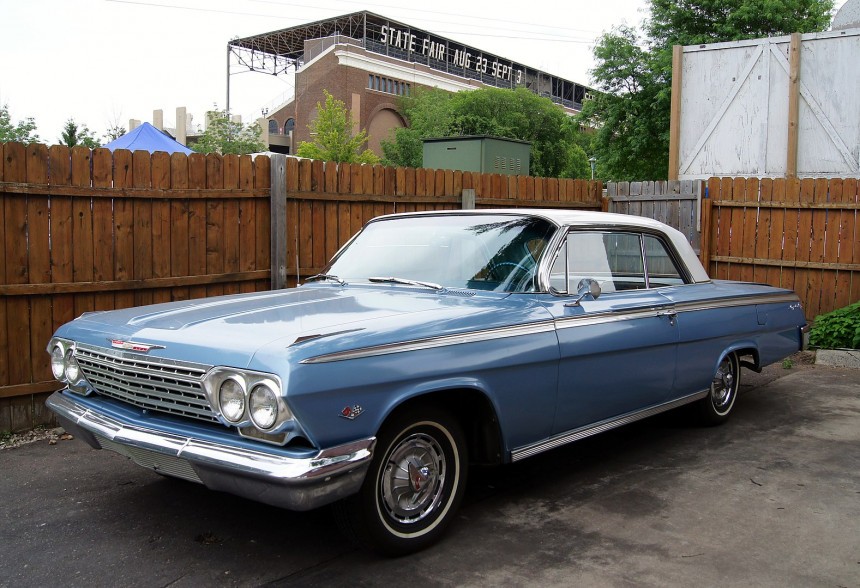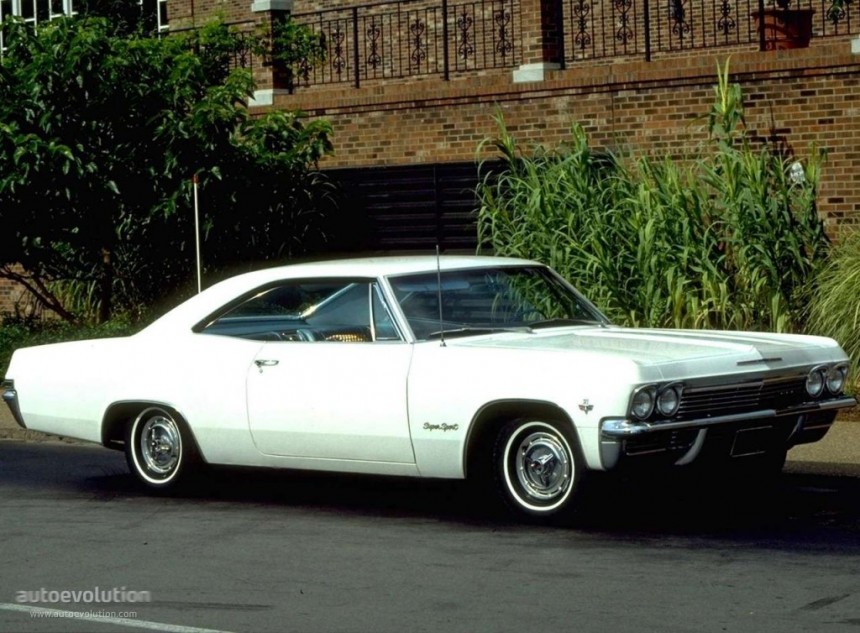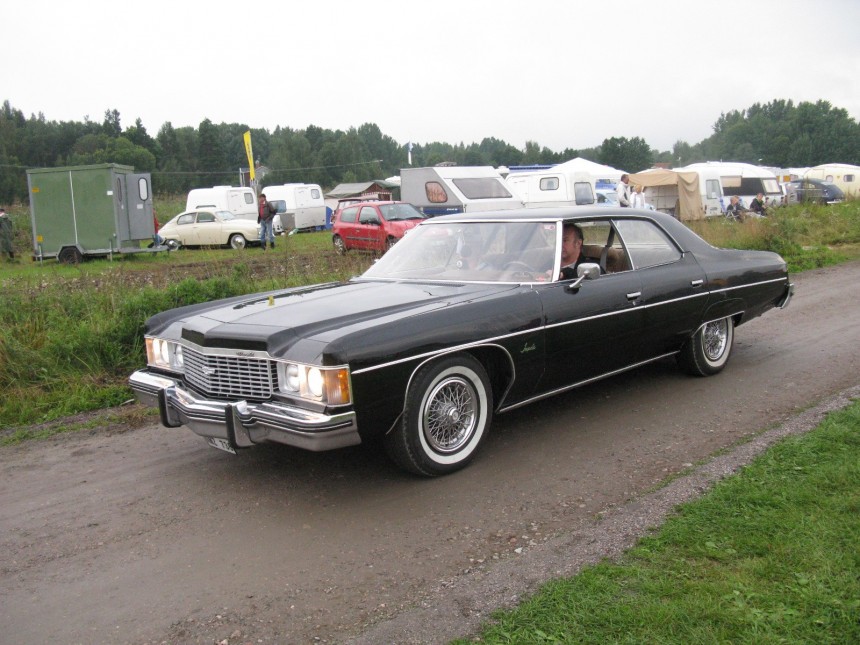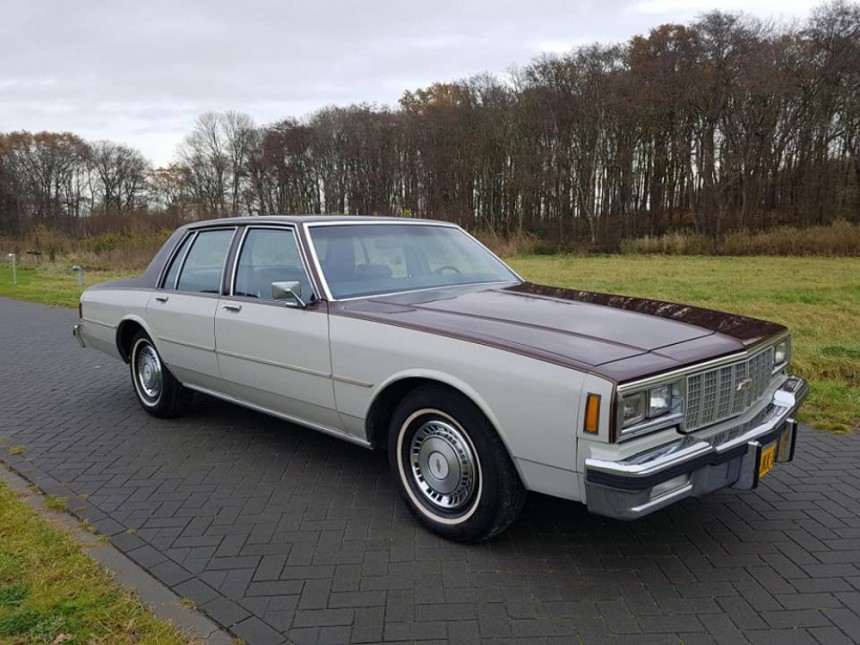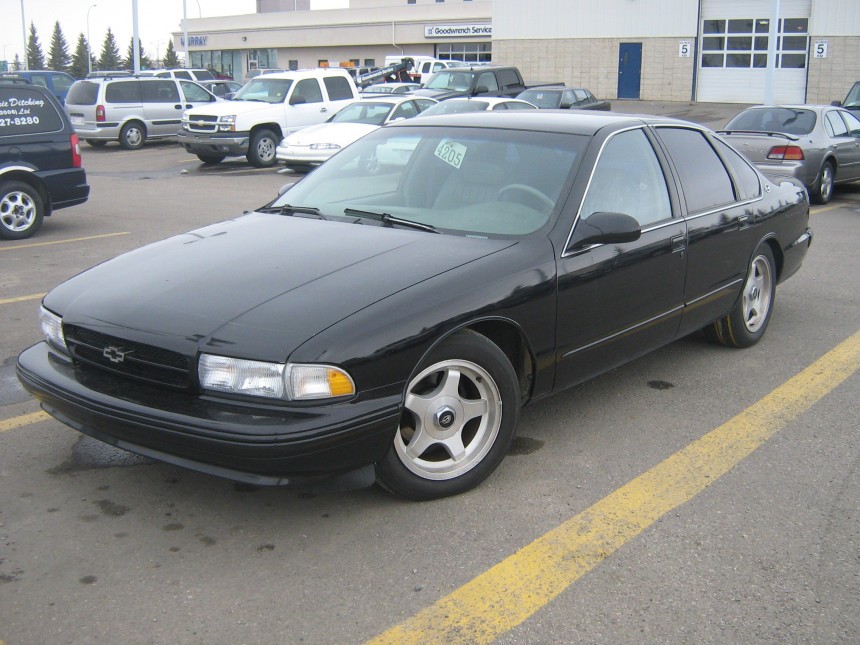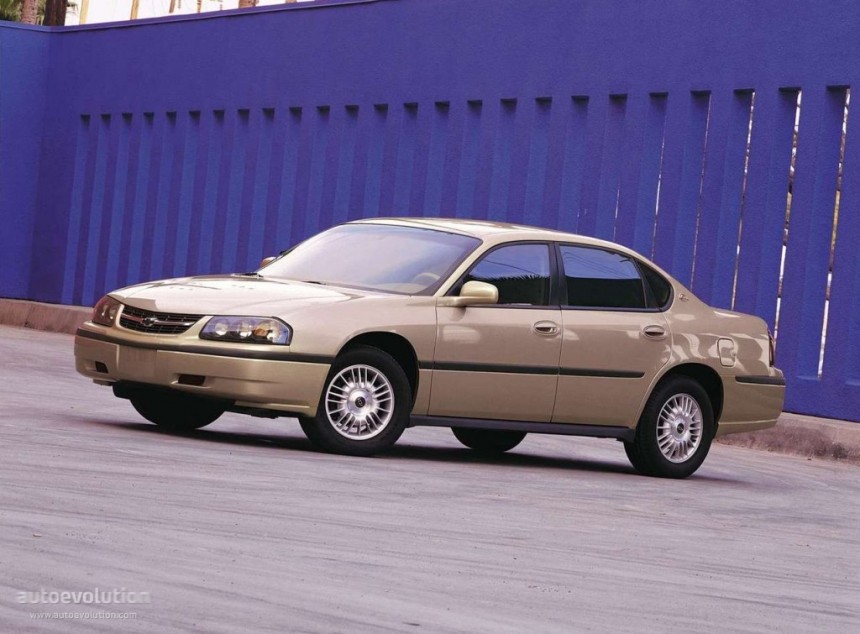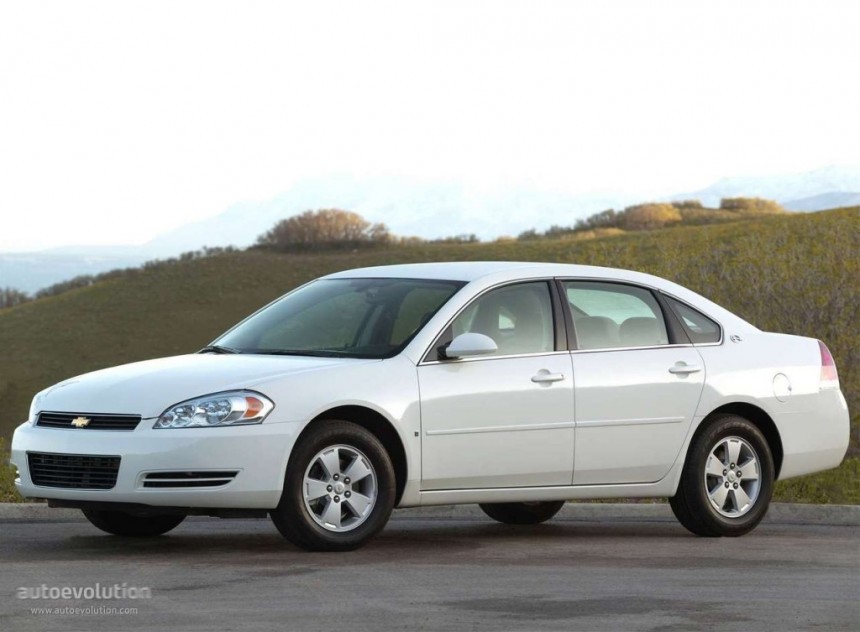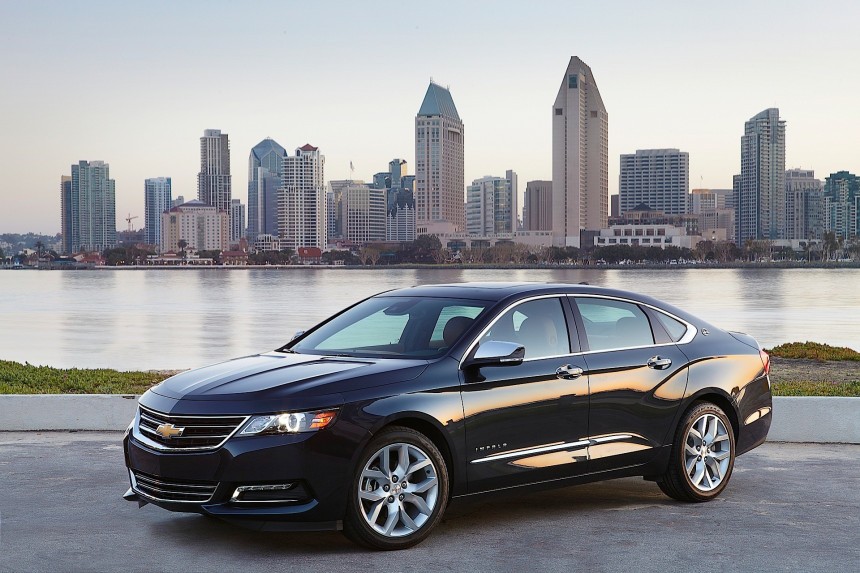The Impala story starts with the Corvette Impala concept that GM introduced at the 1956 Motorama. It was nothing more than a five-seater Corvette, but it sparked people's imagination and GM's desire to turn it into something big. The first generation launched in 1958 as a top-of-the-line version of the Chevy Bel Air, becoming one of the most successful cars in automotive history.
Chevrolet Impala's story is closely intertwined with the GM's B platform, or at least its modern part. The B platform, sometimes called the B body, was produced in various forms from 1929 until 1996. The Chevy Impala wasn't there to witness its beginnings but started life along with a major re-engineering in 1957 when GM replaced the rear leaf springs with coil springs.
The Chevrolet Impala also went dark along with the B platform when the one-off Impala SS (1994-1996) was discontinued. It took Chevrolet another four years to offer a replacement, although in a different segment and with different credentials. The Impala returned to the full-size segment with the tenth generation, but GM decided to retire it for good in 2020, despite promising otherwise. It kept the much uglier Malibu in production, although it also lives on borrowed time.
The public well-received the Corvette Impala prototype, so GM wanted to offer more. At the time, it struggled to compete with Ford, with the full-size segment particularly difficult. That's when GM launched the Impala as a top-of-the-line version of the Bel Air. Designed to mark GM's 50 years of automobile production, the Bel Air Impala was offered as a two-door coupe and convertible only.
Although the overall length was identical, it sported a longer wheelbase than the Bel Air. The design, with the beautiful hood line and the long rear deck, was a perfect match for the name, derived from the African antelope. Simply put, the Impala was among the best-looking cars of its time.
The Impala became an overnight hit, and even today, it's one of the most rewarding collector cars. It marked a turning point for Chevrolet and GM, with demand so high that Chevrolet allocated 15 percent of its production capacity to the Bel Air Impala.
With the huge success, Chevrolet offered the Impala as a separate line of vehicles, parting ways with Bel Air. Thus, the car got three new body shapes: a four-door hardtop, a four-door sedan, and a five-door station wagon. The design was streamlined with a cleaner front and flattened fins at the rear.
However, there were times for cost-cutting measures, so the Impala was downgraded to sharing bodyshells with lower-end Buicks, Oldsmobiles, and Pontiacs. That didn't matter to customers who were hooked on Impala's design and features. The Sport Coupe version was particularly successful, attracting most orders.
The Impala imposed itself as the new sales king, so the Bel Air, from which it originated, had to contend with the second place. Nevertheless, they both shared the same design DNA. Initially offered as a two-door convertible and a four-door sedan, the third-gen Impala would get new body versions.
The third generation was also the first to debut a Super Sport (SS) variant in 1961. The badge would become the Chevrolet performance brand. Unlike later iterations, the 1961 Impala SS was fitted with a performance package including suspension and engine upgrades. Probably the most iconic version was the one that featured the 409-ci V8 engine with 409 horsepower, thanks to Beach Boys' song "409."
The fourth-generation Impala will be remembered for its sales record of more than one million units in 1965, which no other model in history could match. The car dropped the X frame for a full-width perimeter frame, a new, less boxy design, and even more luxurious features.
As history goes in circles, Chevrolet introduced a new luxury package for the Impala called Caprice. The Caprice became a standalone model the next year, taking the top position in the full-size Chevrolet lineup and pushing the Impala downwards. Nevertheless, this hasn't made the Impala less compelling.
Chevrolet has offered a refreshed car with every model year during this generation. New designs and upgraded features kept it relevant in the coming years, and in 1969 it topped Caprice production by a margin.
With the fifth generation, Chevrolet Impala has significantly grown to accommodate changes imposed by the new safety regulations. Thus, it became the largest car ever offered by Chevrolet and the largest generation of the model line. Station wagon versions could provide room for as many as nine people.
This also marked the repositioning from the top of the full-size Chevrolet sedan line to its base as the Biscayne and Bel Air were retired. The engine power also decreased as GM lowered the compression ratios across the range. This was done in anticipation of the catalytic converters planned for 1975, which necessitated the use of unleaded fuel.
It was the start of the 1973 energy crisis, and car sales were heavily impacted. Impala barely sold 176,000 units in 1975, the lowest number since its introduction in 1958. Something got to give.
The Impala was the first sedan line of the Big Three carmakers to undergo downsizing for the 1977 model year. The new Impala was shorter and narrower but taller than the model it replaced, being built on a shorter version of the B platform. The latter would remain virtually unchanged until 1996 when it was retired.
Despite being shorter, the 6th-gen Impala still offered improved headroom, rear-seat legroom, and trunk space, which made it ideal for taxi companies. This made it a sales success, and Impala regained its number-one sales position in the U.S. in 1977 and 1978.
Sales stalled starting in 1980, and GM decided to retire the Impala name for good. The Caprice would take its place at the bottom of the full-size line, with Caprice Classic and Caprice Classic Brougham as the upper offerings.
The B platform was redesigned for the 1991 model year, and GM decided to resurrect the Impala SS badge with a concept introduced at the 1992 Detroit Auto Show. Two years later, the Chevrolet Impala SS was launched into production, almost identical to the concept.
The car was, essentially, a high-performance version of the Caprice, powered by a detuned LT1 V8 engine from the fourth-generation Corvette. The chassis borrowed many performance parts from the Caprice 9C1 police package, previously only available to law enforcement and government agencies.
The Impala SS would feature a sports-tuned suspension, upgraded brakes, and a limited-slip differential as standard. Sales picked up slowly due to parts shortages in the first year of production and barely reached 42,000 units in 1996 when GM retired the B platform, and this ended the Impala career for the second time.
They say you don't forget your first love, and GM hasn't either, as it decided to give Impala a new spin in 2000. With the B platform buried, the revived Impala would use the second-generation W platform (GMX210) from the mid-size Lumina. This made the Impala sort of undecided about its segment.
For the first time, the Impala became a front-wheel drive car and had no V8 engine on offer. Its most powerful engine was launched in 2004 under the hood of the Impala SS, with 240 horsepower from a 3.8 liter supercharged V6.
Chevrolet overhauled the Impala for its ninth generation, which was now built on the updated W platform (GMX211). The design was rather bland, which is probably why most of the cars were bought by fleet operators. It was the last car in production to have a bench seat in the front.
Chevrolet offered an Impala SS version until 2009 with a proper V8 engine. Oddly, this was the first V8 in a front-wheel drive Chevrolet and the first V8 in a Chevrolet sedan since the 1996 Caprice. The 5.3-liter V8 developed 303 horsepower and propelled the Impala SS from 0 to 60 mph (96 kph) in 5.6 seconds.
GM wanted to return the Impala to its former glory with the tenth generation, built on the modern Epsilon II platform in long-wheelbase form. This helped it regain its full-size car status. The design was slightly more enticing, with the rear fenders reminding us of the first-generation Impala.
The engine range was downgraded once more to use four-pot powerplants (the first time in an Impala), with a 3.6-liter V6 as top of the range. It was successful at first, and in the first year of sales, Impala increased its share of the full-size market from 7 percent to almost 15 percent.
Sales dropped sharply from the 2017 model year, and rumors surfaced in 2018 that GM would retire the Impala for the third time. GM CEO Mary Barra denied this, saying GM would not exit the sedan market. Two years later, Impala was put on the chopping block, with the last car being assembled on February 27, 2020.
With sedans a dying breed, we're fairly sure Chevrolet will not use the Impala nameplate on such a car body again. And given the significance of the name, it would be inappropriate to stamp it on an SUV, which looks more like a pachyderm than an impala. But who knows what life brings us?
The Chevrolet Impala also went dark along with the B platform when the one-off Impala SS (1994-1996) was discontinued. It took Chevrolet another four years to offer a replacement, although in a different segment and with different credentials. The Impala returned to the full-size segment with the tenth generation, but GM decided to retire it for good in 2020, despite promising otherwise. It kept the much uglier Malibu in production, although it also lives on borrowed time.
First generation (1958): The storm
Although the overall length was identical, it sported a longer wheelbase than the Bel Air. The design, with the beautiful hood line and the long rear deck, was a perfect match for the name, derived from the African antelope. Simply put, the Impala was among the best-looking cars of its time.
The Impala became an overnight hit, and even today, it's one of the most rewarding collector cars. It marked a turning point for Chevrolet and GM, with demand so high that Chevrolet allocated 15 percent of its production capacity to the Bel Air Impala.
Second generation (1959-1960): Separate paths
However, there were times for cost-cutting measures, so the Impala was downgraded to sharing bodyshells with lower-end Buicks, Oldsmobiles, and Pontiacs. That didn't matter to customers who were hooked on Impala's design and features. The Sport Coupe version was particularly successful, attracting most orders.
Third generation (1961-1964): First Super Sport (SS)
The third generation was also the first to debut a Super Sport (SS) variant in 1961. The badge would become the Chevrolet performance brand. Unlike later iterations, the 1961 Impala SS was fitted with a performance package including suspension and engine upgrades. Probably the most iconic version was the one that featured the 409-ci V8 engine with 409 horsepower, thanks to Beach Boys' song "409."
Fourth generation (1965-1970): Sales records
As history goes in circles, Chevrolet introduced a new luxury package for the Impala called Caprice. The Caprice became a standalone model the next year, taking the top position in the full-size Chevrolet lineup and pushing the Impala downwards. Nevertheless, this hasn't made the Impala less compelling.
Chevrolet has offered a refreshed car with every model year during this generation. New designs and upgraded features kept it relevant in the coming years, and in 1969 it topped Caprice production by a margin.
Fifth generation (1971-1976): The burgeoning
This also marked the repositioning from the top of the full-size Chevrolet sedan line to its base as the Biscayne and Bel Air were retired. The engine power also decreased as GM lowered the compression ratios across the range. This was done in anticipation of the catalytic converters planned for 1975, which necessitated the use of unleaded fuel.
It was the start of the 1973 energy crisis, and car sales were heavily impacted. Impala barely sold 176,000 units in 1975, the lowest number since its introduction in 1958. Something got to give.
Sixth generation (1977-1985): Disgrace
Despite being shorter, the 6th-gen Impala still offered improved headroom, rear-seat legroom, and trunk space, which made it ideal for taxi companies. This made it a sales success, and Impala regained its number-one sales position in the U.S. in 1977 and 1978.
Sales stalled starting in 1980, and GM decided to retire the Impala name for good. The Caprice would take its place at the bottom of the full-size line, with Caprice Classic and Caprice Classic Brougham as the upper offerings.
Seventh generation (1994-1996): The Impala SS
The car was, essentially, a high-performance version of the Caprice, powered by a detuned LT1 V8 engine from the fourth-generation Corvette. The chassis borrowed many performance parts from the Caprice 9C1 police package, previously only available to law enforcement and government agencies.
The Impala SS would feature a sports-tuned suspension, upgraded brakes, and a limited-slip differential as standard. Sales picked up slowly due to parts shortages in the first year of production and barely reached 42,000 units in 1996 when GM retired the B platform, and this ended the Impala career for the second time.
Eighth generation (2000-2005): First love
For the first time, the Impala became a front-wheel drive car and had no V8 engine on offer. Its most powerful engine was launched in 2004 under the hood of the Impala SS, with 240 horsepower from a 3.8 liter supercharged V6.
Ninth generation (2006-2013): Bland
Chevrolet offered an Impala SS version until 2009 with a proper V8 engine. Oddly, this was the first V8 in a front-wheel drive Chevrolet and the first V8 in a Chevrolet sedan since the 1996 Caprice. The 5.3-liter V8 developed 303 horsepower and propelled the Impala SS from 0 to 60 mph (96 kph) in 5.6 seconds.
Tenth generation (2014-2020): The swan song
The engine range was downgraded once more to use four-pot powerplants (the first time in an Impala), with a 3.6-liter V6 as top of the range. It was successful at first, and in the first year of sales, Impala increased its share of the full-size market from 7 percent to almost 15 percent.
Sales dropped sharply from the 2017 model year, and rumors surfaced in 2018 that GM would retire the Impala for the third time. GM CEO Mary Barra denied this, saying GM would not exit the sedan market. Two years later, Impala was put on the chopping block, with the last car being assembled on February 27, 2020.
With sedans a dying breed, we're fairly sure Chevrolet will not use the Impala nameplate on such a car body again. And given the significance of the name, it would be inappropriate to stamp it on an SUV, which looks more like a pachyderm than an impala. But who knows what life brings us?
